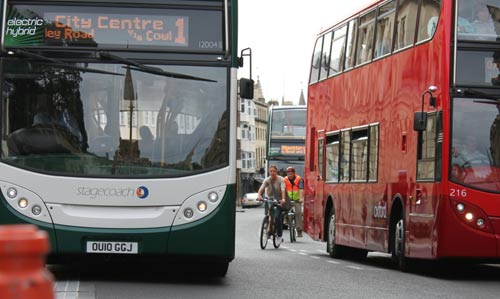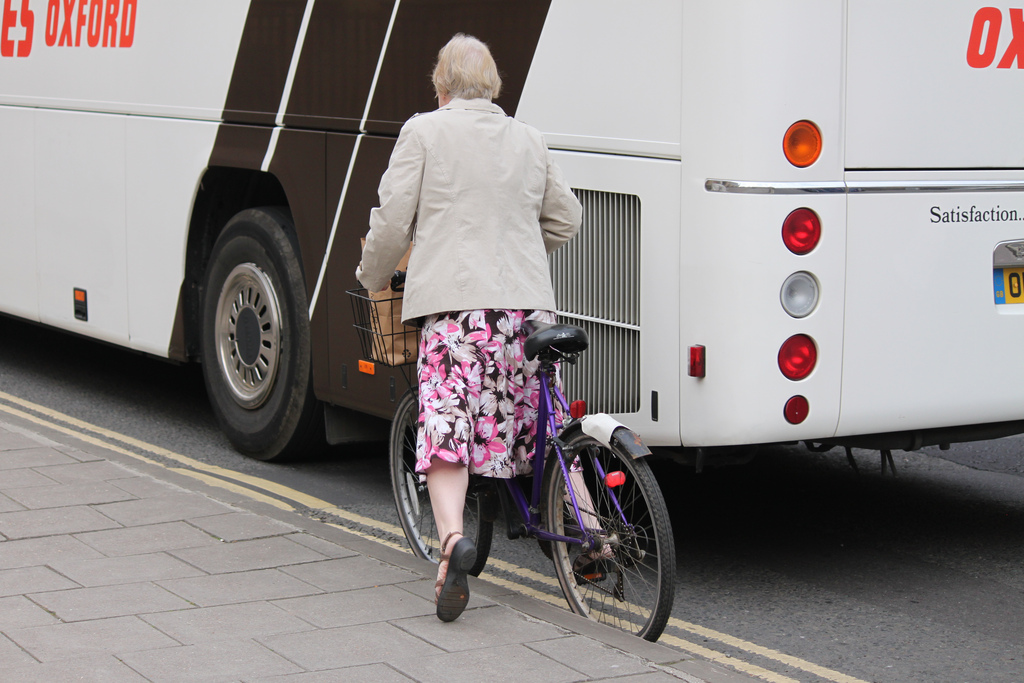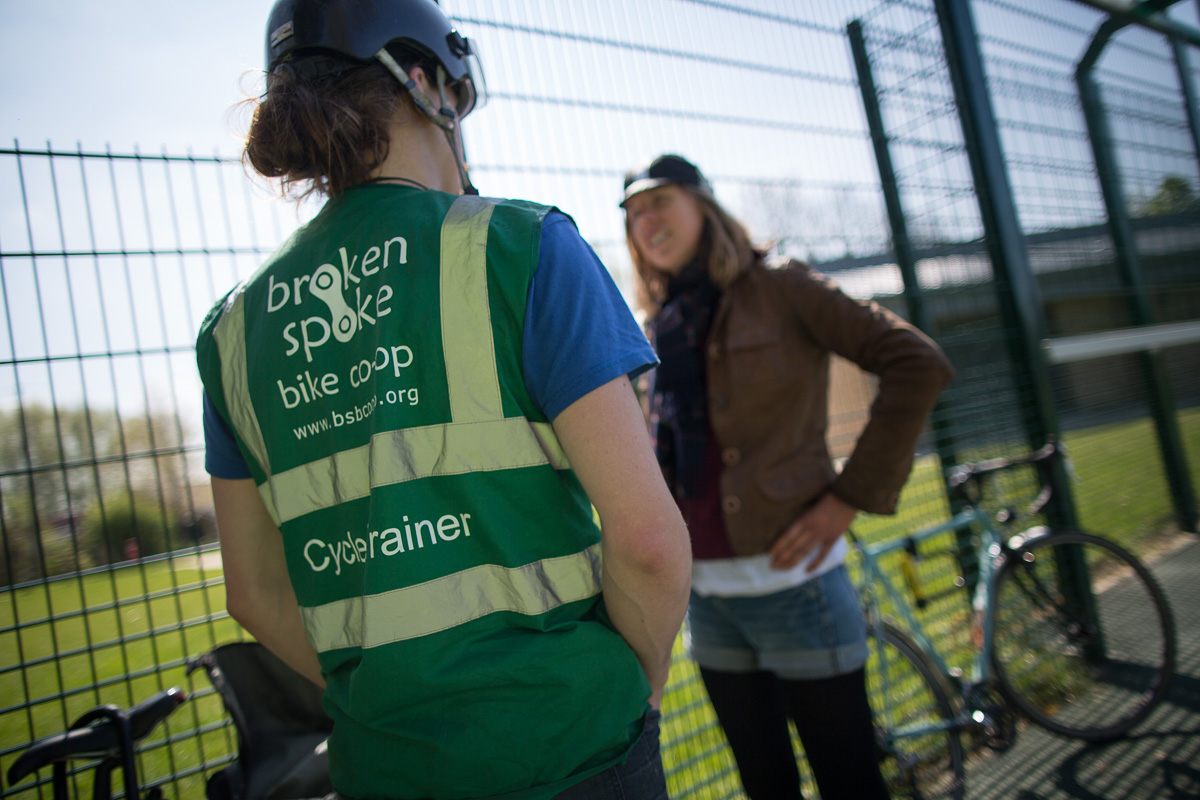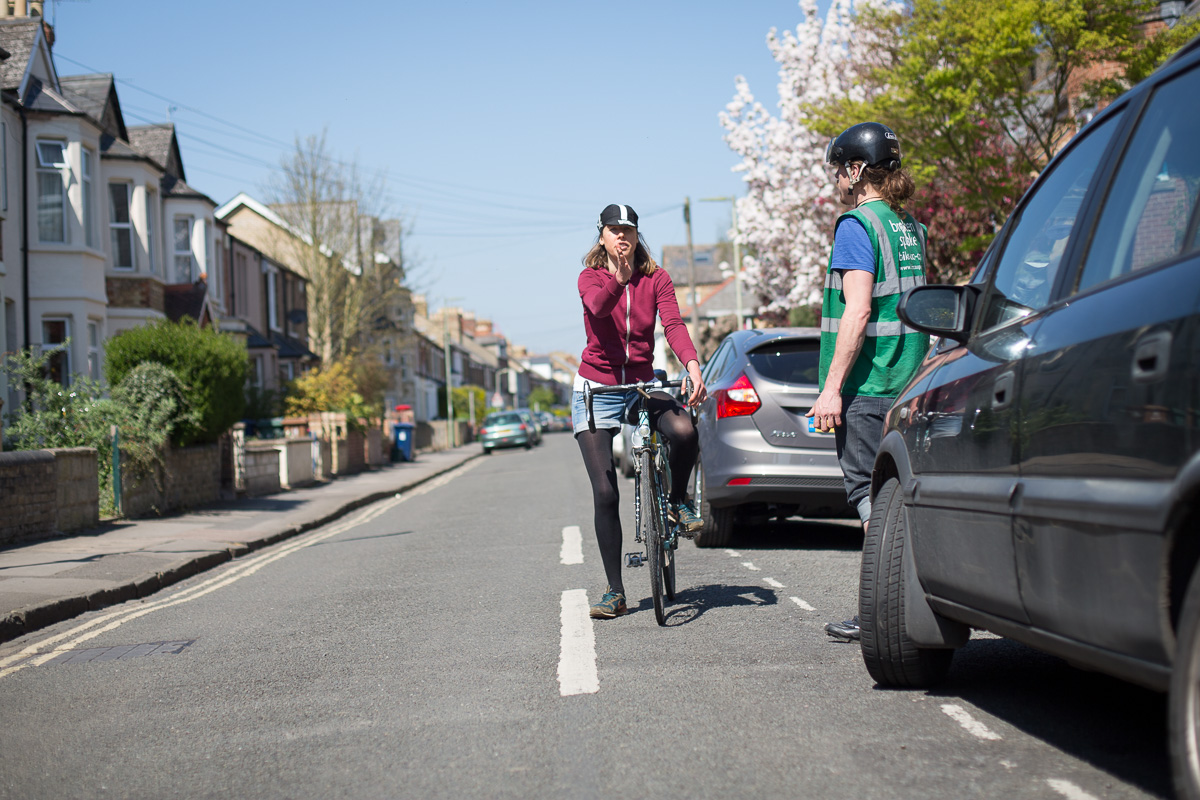One month on from the loss of a friend on the road, could cycle training answer the call to transform our car dominated city roads into living streets?
Today is the 9th of June, which means it’s been a month since Claudia’s death. Lots has happened in these four and a half weeks, some of which we told in our post The Story of Change continues. The action of the first week has subsided, there was her funeral, followed by a memorial celebration of Claudia’s life at Hogacre last week.
And we’re left with the question, where do we go from here? What can we do to feel less helpless in the face of the challenge? The challenge of transforming our city into the most liveable space we can imagine it to be. A city where active and community-supporting modes of transport like walking and cycling are a true choice available to everyone: children, parents, young and old people, people with different abilities, and not just the few who feel able to cope with the current infrastructure conditions. How do we counteract the separation and isolation that is entrenched further and further every day by the dominance of motorised vehicles on the roads?
We can sign the petition initiated by a student at the University of Oxford that’s calling for the University and the City and County Councils to do more for the safety of cyclists in Oxford. Even if we don’t fully agree with everything the petition calls for, we can sign it out of the hope that people with decision-making power will realise that many care deeply about drastically improving the conditions for people who choose to cycle in Oxford. That it will lead them to engage in dialogue with a willingness to change their beliefs about what is important in this city. That they will realise that it is in everyone’s – including their own – interest to rethink the dominance of motorised vehicles and that it is in their power to bring about substantial change. This could be one of many elements that instigates lasting change towards a city that works for everyone.
We can join others who campaign for cycling in Oxford, we can start our own initiatives, organise a Cyclists are Heroes flash mob, organise car free days on Broad Street, St Giles, Cowley Road. We can enter the world of possibility, reimagine the future together, visit other places in the world where we can experience the kind of conditions we’d like to see and not give up on our power.
We can cycle.
And what can we, who currently cycle, do to try to make it as unlikely as possible that we are harmed while cycling? What is our share of the responsibility of all road users? Putting on helmets and high visibility clothing? Keeping our brakes sharp and our bikes working well overall? Using segregated infrastructure where available and get off and walk where it’s not?
Here is what we propose: for all of us to learn how to cope with current road conditions, how to position ourselves to be most seen by others and able to see others, how to communicate effectively with other road users. That is what cycle training is about – and we wish more people would do it. Not under the illusion that it will bring about levels of cycling found in other parts of Europe, that will require massive structural changes to road design that prioritise walking and cycling and makes those the most effective ways to get around the city. But, with the pure hope that cycle training equips everyone who chooses to cycle under the current conditions with the tools to keep cycling, and to give everyone who wants to take up cycling NOW the best chance to cope with what they will find on the roads. Fellow humans who try to get from A to B in the safest, most effective and convenient way, without injuring themselves, their loved ones or anyone else. Humans who are fallible, stressed, and used to a society where people are constantly pitched against each other and made to believe that if you don’t watch out for yourself, no one will.
What is cycle training? Cycle training is radical and it’s important. It’s a recognised and nationally endorsed programme, with funds available from central government that local authorities can apply for. It was launched in 2006 after years of research put in by people from over 20 different organisations into how to best teach people the skills to cycle and use the current road infrastructure. It is the curriculum taught to children in many schools across the UK under the name Bikeability. That said, there is a surprising lack of transparency around the development and availability of cycle training. We find this particularly worrying given how important it is that people are enabled to make informed decisions on how to use the roads safely.
What does cycle training involve? It is about seeing & being seen. It teaches you how to make informed choices of where to position yourself on the road, how to read the roads and conditions, and where to use current cycle infrastructure. Wearing high-viz and using lights can be helpful – but, in a risk assessment process, whether formal or informal, personal protective equipment (PPE) is the final step you take after having exhausted all other means of mitigating the risk. When you can’t work out how else to make the activity any safer. Cycle training is one of the risk assessment steps that come before that, it’s the behavioural change. Structural change is another very important step, beyond the scope of this article to explore. Let’s not stay trapped in a debate that focusses on the last part of the jigsaw and fail to engage with the complete puzzle.
Cycle training is about communicating – the roads are public spaces, and we all need to communicate effectively with other road users. There are different strategies for this. For example, they can be aggressive, people driving cars can become angry when stuck behind people cycling more slowly. They can be submissive, people cycling can be afraid to use the roads so stick to the kerb along with the drains, potholes, and puddles. They can be engaged, people can make eye contact and communicate their intentions to other road users and allow space for this to happen.
Unfortunately, there’s a disconnect between what’s currently accepted as the way to cycle and what engaged, confident and safe cycling looks like. That is a disconnect that’s sadly visible in many road users behaviour, and we think there needs to be a widespread change among all road users about what confident cycling looks like. It is problematic – and ultimately likely to fail – if we only offer cycle training to those who are currently cycling, particularly if people respond to them aggressively for doing what they have been trained to do. We need to raise everyone’s awareness if we are going to have safer, more liveable spaces.
Imagine…
… having a County Council that sees the connection between cycling and walking, and healthier, happier people, cleaner air, safer cities, vibrant communities and prioritises this by investing in cycle training for all residents and substantial infrastructural changes.
… those responsible for training drivers of motorised vehicles saw the importance of understanding the behaviour of all road users, be that people who are driving a car, lorry, van, or bus – or people cycling and therefore provided comprehensive training so that we can all enjoy getting from A to B.
… more people knew that the University of Oxford provides 6 hours of National Standard cycle training to all members (staff and students) of the University and more University members took advantage of this.
… more employers supported their staff and members this way.







